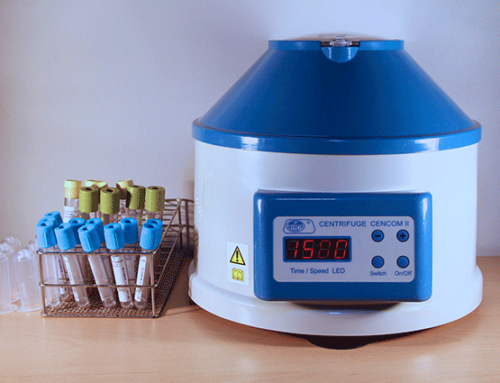Running a mid-distance race like 10Ks or half-marathons have always been popular, but participation in these races has been steadily increasing every year. In fact, last year alone, close to two-million people ran in half-marathons in the United States.
Whether you are an avid runner or are new to the game, you can sign up to join a mid-distance race practically any time of year. But, if you live in North Carolina, the season for these races typically starts in March, so you need to start training in January. Before you tie up your laces and hit a course, you need to prepare. Here are some helpful tips on how to train for a mid-distance race safely.
Choosing a race
There are plenty of road races to choose from. So, it is essential to select the race that is right for you. Doing otherwise will put you in a position of disadvantage, and your first race will likely also be your last. Here are some great tips for choosing the best race.
- Choose a race that fits with your personal goals.
- Choose the best distance for you. Mid-distance races can range from approximately six to 13 miles. Choosing one that is either too long or too short can hinder your experience.
- Choose a race with a time and training commitment that works best for you.
- Choose a race with weather conditions you are comfortable with.
- Choose a race with a terrain you are comfortable with.
- Choose a race with the right number of participants for you.
- Choose a race that fits into your budget.
Preparation time
Training for a mid-distance race like a half-marathon does not happen overnight. It is a commitment that requires dedication. When you set out to run your first half-marathon, look for one that is at least two months into the future to give yourself ample time to train. If you are new to running, set a goal of logging between 10-15 miles per week and then build up to where you can run between 25-30 miles per week. If you are an experienced runner, start with 25-30 miles and build up to 40 or more miles each week.
If your goal is to run a 10K, plan on training for at least eight weeks if you are a new runner. Some beginner runners need a full ten weeks to train for their first race. Plan to spend at least three or four days a week getting road work in. Once you are comfortable with that regimen, you can move up from there. It is also a good idea to get in a few days of cross-training into your preparation for a 10K.
Training practices and running form for a mid-distance race
To be an effective runner, you need to use the proper form. Although it is easy to think that you only need to worry about your lower body, that is not the case. Having the proper running form requires your entire body.
Head
To get the right form, make sure your focus is straight ahead of you. Avoid the temptation to look down at your feet. It can be easy to let your chin drop as you tire out, but you must keep your head up and focus forward, which will help to keep your neck and spine properly aligned. Also, take a moment to make sure your ears are in alignment with your shoulders, so your head does not protrude forward.
Upper body
Keep your shoulders pressed back. A good rule of thumb is to pretend you are holding a pencil between your shoulder blades that you cannot drop. Also, your shoulders should always be moving in opposition to your torso. Always keep your arms at a 90-degree angle and your elbows close to your body. Moving your fists between your chin and hip will help you propel your body forward. But, make sure your hands are relaxed.
Clenching your fists will cause you to expend too much energy that you need to use for the race. Your torso serves as your center of gravity while you are running. So, using it properly is crucial to a successful race. Keep your spine long and tall. Also, keep your core tight and move it in conjunction with your feet.
Lower body
Your hips should be slightly pulled back, so they are not ahead of your torso. Keeping your hips in this position will allow you to get more power out of your gluteal muscles. Keep your knees aligned with the middle of your feet, so your feet are right under your knees when they strike the ground. Do not lift them to a 90-degree angle if you are running on flat ground so you can conserve energy. Try to keep your shins as perpendicular to the ground as possible when your foot hits the ground. Finally, pay attention to how you use your feet to ensure you are using them to push off. Your goal should be to hit the road with the ball of your foot so you can propel forward.
The value of the run/walk method
The run/walk method of mid-distance training is frequently used by beginners. But it has value, regardless of how much experience you have. Here are some great benefits you can get from implementing the run/walk method in your training:
- Reduce the likelihood of injury
- Improve speed
- Improve running fitness, aerobic capacity and overall recovery
- Reduce fatigue during a run
- Customizable for every runner
- Makes running more tolerable mentally
The importance of warming up and cooling down in a mid-distance race
Just about anyone who has had to go through a high school physical education class has been told about the importance of warming up and cooling down when exercising. But, often, these words of advice can go in one ear and out the other. When training for a mid-distance road race, it is crucial to take that sage advice to heart. Warming up and cooling down are key elements in a mid-distance race training program.
Each element takes no more than a few minutes, but the benefits are incredible, particularly when it comes to avoiding injury. Warming up will keep your blood flow going and let your body know that it needs to get ready for exercise. Plus, when your body is loose and warm, it will respond better to the challenges you present it with. Aim to keep your warm-up between five and 10 minutes.
Your cool down is equally important. It will keep your heart rate and blood pressure from dropping too rapidly, which can result in dizziness or light-headedness. Cool down by decreasing your intensity for the last several minutes of your workout. Do not neglect stretching at the end of your cool down run. Stretching will help your flexibility and further reduce your chances of injury.
Finding a mid-distance race in the Triangle
Running mid-distance races like a 10K or half-marathon is a great way to get exercise and make sure you stay in shape. If you are up for this type of challenge, make sure you train properly, so you remain safe and prevent injuries. Once you finish your first mid-distance race, do not be surprised if you get the itch to try a second. Before you know it, you will be running them all the time!
Find races in your area HERE






